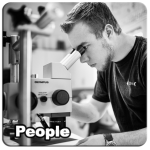
[Lab news] Jake participates in the fall 2016 Massachusetts Bottom Trawl Survey


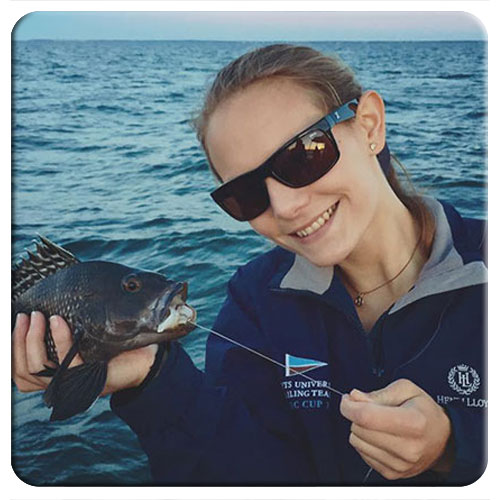
Welcome to team the Julie, it’s great to have you.
The Ocean & Atmospheric Research program (OAR) of NOAA and Sea Grant just announced the winners of its most recent round of research funding to better understand the consequences of ocean warming and acidification on key marine resources in U.S. Northeast coastal waters. We are happy and proud that our proposed work on the climate sensitivity of Northern sand lance (Ammodytes dubius) was one of the four projects selected for funding. This is particularly good news for Chris Murray, who for his PhD can now expand his experimental rearing expertise to this important species.
This work will be conducted collaboratively with colleagues from NOAA (David Wiley), USGS (Page Valentine), Boston University (Les Kaufman), and Woods Hole Oceanographic Institution (Scott Gallager).
You can read the official announcement as it appeared on 6 September 2016 on NOAA’s News site.
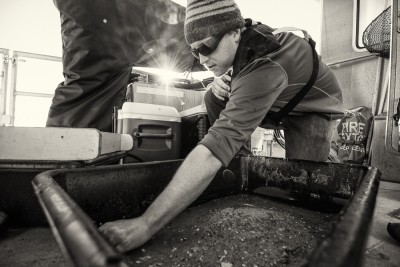
On 19-20 July, our lab temporarily transformed into a genetics laboratory, as Nina Therkildsen and her post-doc Aryn Pierce Wilder visited us from Cornell University (Therkildsen Lab). Their lab also shares the fascination for the Atlantic silverside as a model organism and has set out to eventually assemble the fully annotated genome of this species.
During their visit, they could accompany us for our bi-weekly beach seining in Mumford Cove, where we collected juveniles born this year as well as the last few spawning ripe adults at the end of the season. It was a great summer morning and fun for everyone.
In the lab, Nina and Aryn went on dissecting different types of tissue (muscle, liver, spleen, gills, fins) from a few specimens destined for genetic analyses. In the Rankin lab, we tried a novel procedure on this species, i.e., making haploid embryos by fertilizing strip-spawned eggs with sperm that was UV-radiated before.
Thank you for visiting, Nina and Aryn, and we will see you back in fall, when Nina will give a Friday seminar on 11 November 2016. We’re looking forward to what she will have to report!

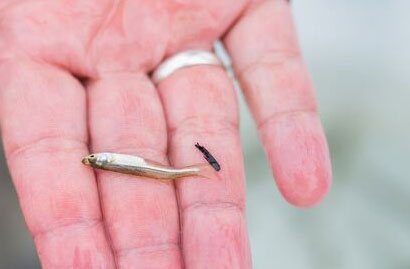
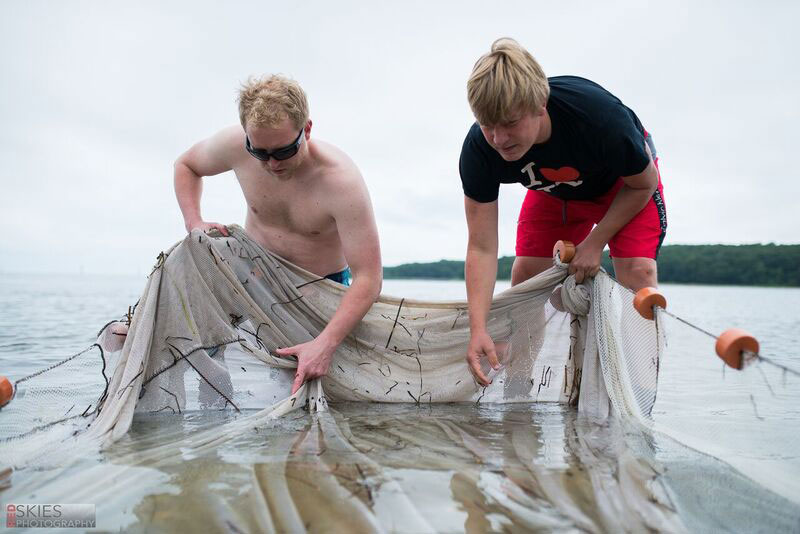
The 40th Larval Fish Conference of the American Fisheries Society‘s (AFS) Early life history section (ELHS) was held from 19 – 23 June 2016 at the Chesapeake Biological Laboratory in Solomons, MD.
This small conference brought together approximately 150 international scientists to talk about larval fish growth, survival, maternal effects, dispersal, systematics to name just a few. It was held in special honor of Edward Houde, who over his long career has inspired generations of marine scientists.
While Chris was presenting last years data about growth consequences of high CO2 exposure across life stages in our model species, the Atlantic Silverside, Hannes participated in the Early Career workshop and gave a talk about how to approach the writing of a scientific manuscript (PDF).
http://media.befel.marinesciences.uconn.edu/public_html/docs/Baumann-LFC-Writing_workshop_web.pdf
Thanks to all the colleagues and friends for the great time and conversations. See you next year in Austin (TX)!
On 6 June 2016, Charlie, Jake and Hannes set course again to the nearby Mumford Cove to retrieve our pH/oxygen/temperature probe (Eureka Manta Sub2) after over six weeks of deployment. Thanks to a newly purchased larger battery-pack that extend the probe-life to more than twice its previous time, the probe continuously recorded conditions every 30 minutes, thereby extending our time series to now over 14 months.
Plus, it was a great, balmy day on the water, and working in the field beats the desk hands down 😉
Check out a selection of the great pics Jake took during the trip below:
Jake reported back to his old undergraduate institution about his current research and how the University of Maine at Machias has inspired him to pursue a career in Marine Sciences.
This week’s Alumni Spotlight shines on Jake Snyder, UMM Class of 2014 with a degree in Marine Biology. Jake lives in Canterbury, Connecticut, and is a research assistant at the University of Connecticut’s Avery Point.
Tell us a little bit about what you are doing now:
Currently, I am a research assistant at UConn Avery Point as part of my masters. I was accepted into the graduate program here in the fall of 2015, and I am now working towards my Masters in Biological Oceanography. Our lab is small, with myself, a doctoral student, and our advisor, but we’re ambitious. Our research is focused on the synergistic effects of ocean acidification, increased temperature, and decreased oxygen on the Atlantic Silverside (Menidia menidia), a near-shore schooling fish. We’ve also recently started working with the Northern Sandlance (Ammodytes dubius), a fish native to Stellwagen Bank. In addition to the lab-based research, I am also digitizing the ~40 year data set collected by Project Oceanology, and developing that into a searchable database as part of the LISICOS (Long Island Sound Integrated Coastal Observing System) system.
Read the whole feature here …
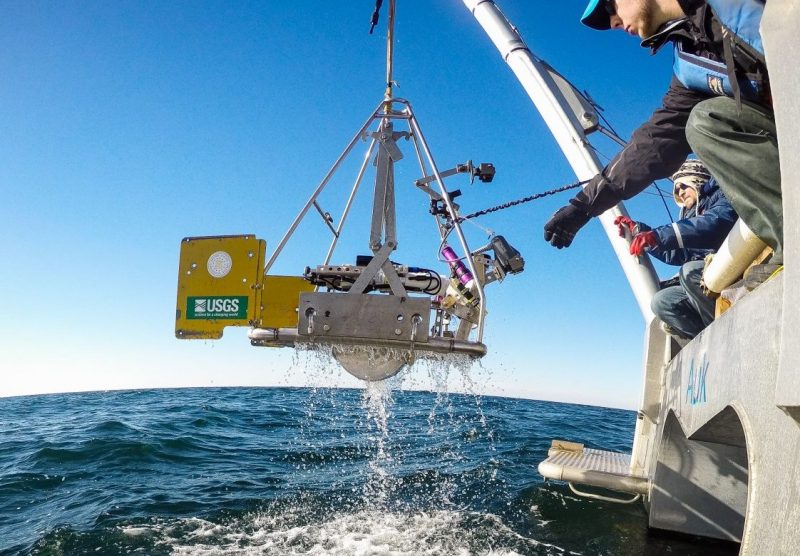
This year, Chris presented the results of last years study on long-term changes in growth distributions in Atlantic silversides exposed to high CO2 conditions, whereas Jake presented a poster outlining his thesis research on long-term environmental and biological data collected by Project Oceanology.
In addition, Jake took his poster ‘on the road’ already and presented it at the 16th Long Island Sound Research Conference (13 May, Bridgeport, CT), while Chris will give his talk again at the 40th Larval Fish Conference in June 2016 (17-23 June, Chesapeake Biological Laboratory, Solomons MD).
Gobler & Baumann’s review provides a good overview over the nascent field of multi-stressor acidification and hypoxia work. A first part firmly establishes that virtually all hypoxic zones in the ocean are also acidified, given that metabolic processes (i.e., respiration) consume oxygen and release CO2 into the environment. In a second part, the sparse emerging evidence for multistressor effects of low pH (high CO2) and low oxygen are reviewed, showing that while the majority of effects are additively negative, every study so far has also found synergistically negative effects of combined stressors in at least one trait.
This invited review was published Open Access.
Gobler, C.J. and Baumann, H. (2016)
Hypoxia and acidification in ocean ecosystems: Coupled dynamics and effects on marine life.
Biology Letters 12:20150976
There is increasing recognition that low dissolved oxygen (DO) and low pH conditions co-occur in many coastal and open ocean environments. Within temperate ecosystems, these conditions not only develop seasonally as temperatures rise and metabolic rates accelerate, but can also display strong diurnal variability, especially in shallow systems where photosynthetic rates ameliorate hypoxia and acidification by day. Despite the widespread, global co-occurrence of low pH and low DO and the likelihood that these conditions may negatively impact marine life, very few studies have actually assessed the extent to which the combination of both stressors elicits additive, synergistic or antagonistic effects in marine organisms. We review the evidence from published factorial experiments that used static and/or fluctuating pH and DO levels to examine different traits (e.g. survival, growth, metabolism), life stages and species across a broad taxonomic spectrum. Additive negative effects of combined low pH and low DO appear to be most common; however, synergistic negative effects have also been observed. Neither the occurrence nor the strength of these synergistic impacts is currently predictable, and there- fore, the true threat of concurrent acidification and hypoxia to marine food webs and fisheries is still not fully understood. Addressing this knowledge gap will require an expansion of multi-stressor approaches in experimental and field studies, and the development of a predictive framework. In consider- ation of marine policy, we note that DO criteria in coastal waters have been developed without consideration of concurrent pH levels. Given the per- sistence of concurrent low pH–low DO conditions in estuaries and the increased mortality experienced by fish and bivalves under concurrent acidifi- cation and hypoxia compared with hypoxia alone, we conclude that such DO criteria may leave coastal fisheries more vulnerable to population reductions than previously anticipated.